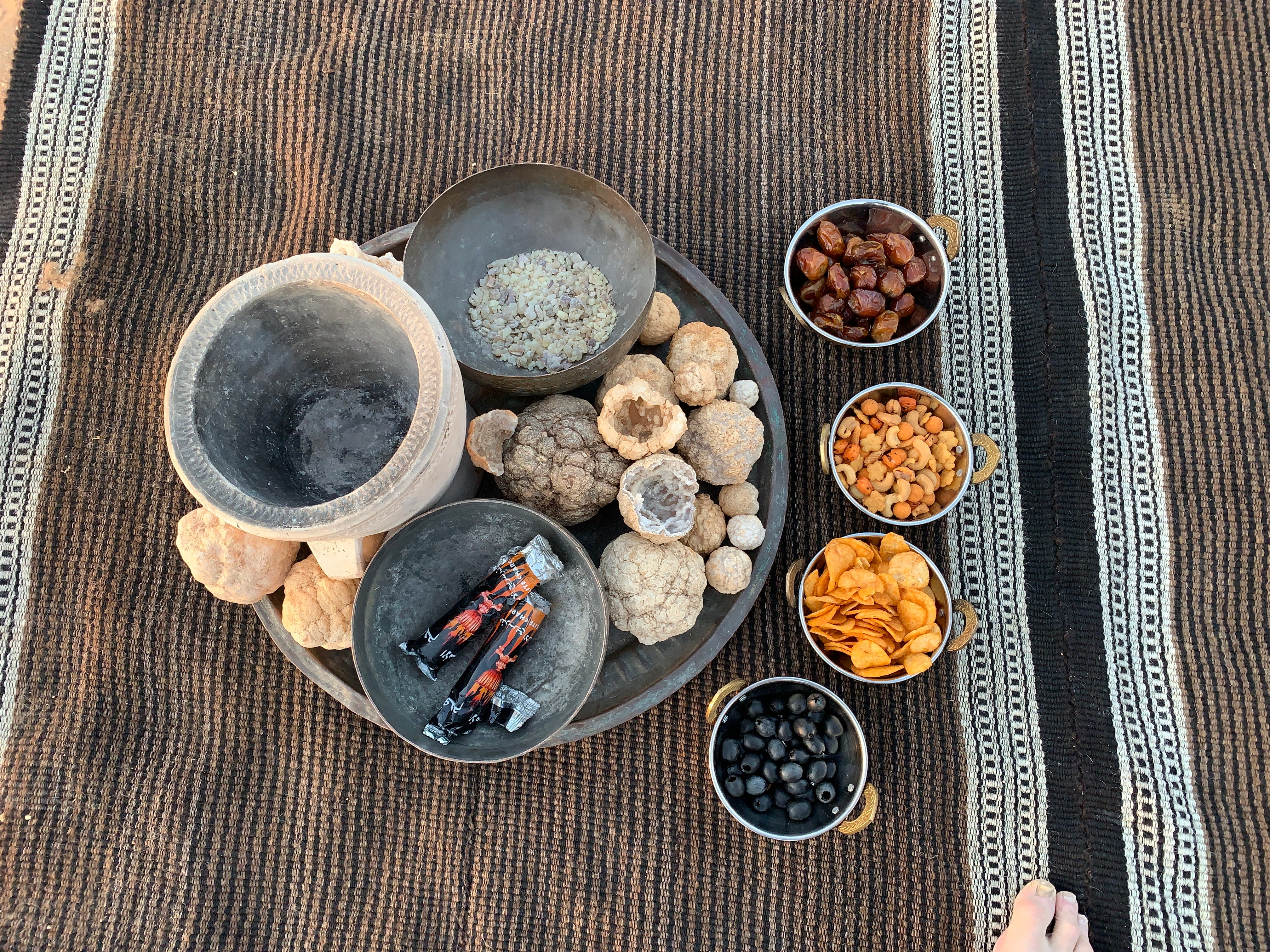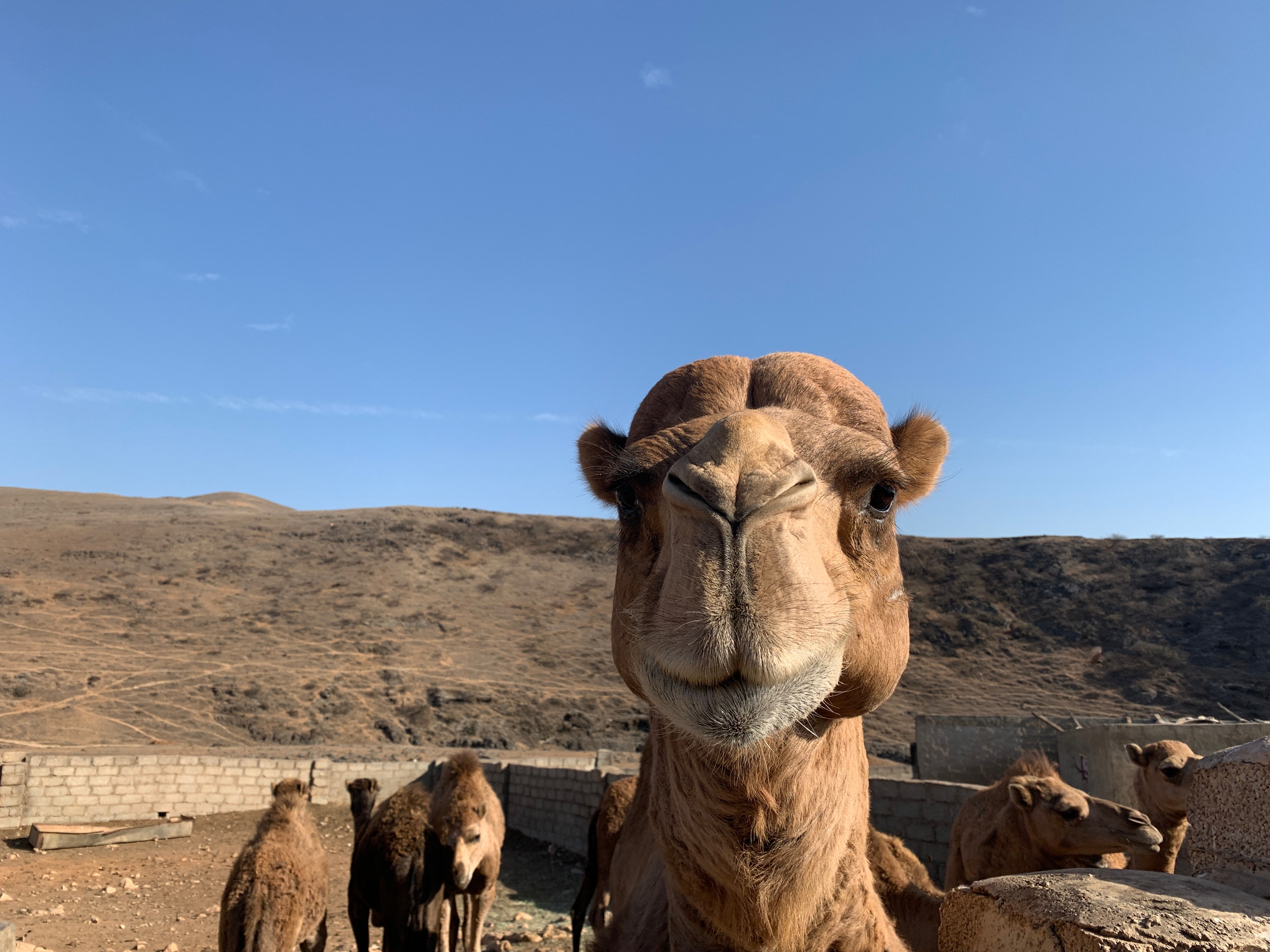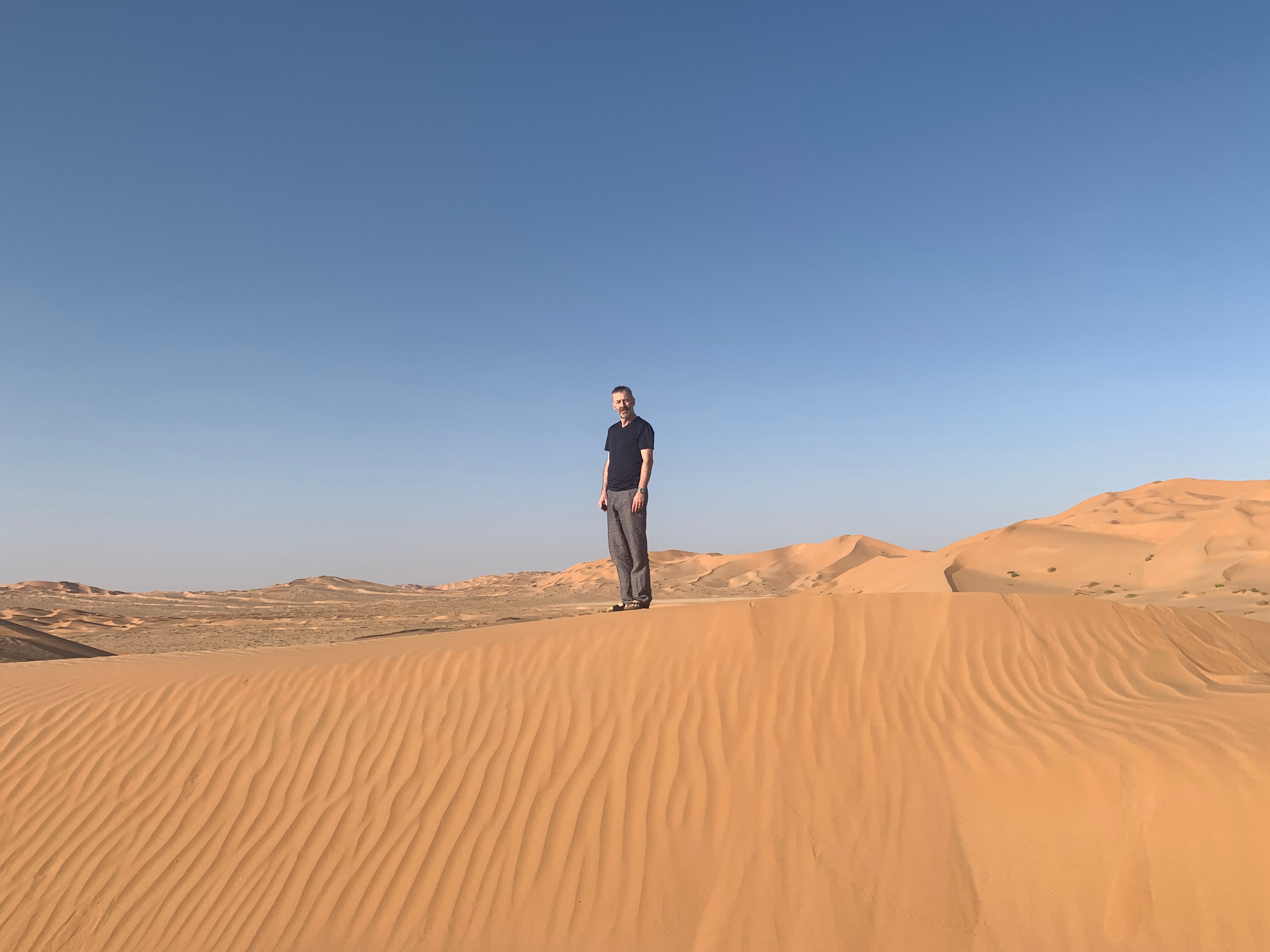The Independent's journalism is supported by our readers. When you purchase through links on our site, we may earn commission.
Beyond remote: exploring Oman’s Empty Quarter
Pin-drop peace and quiet, ever-shifting sandscapes and unspoiled coastline – Oman’s swathes of desert will bring out your inner explorer, writes Mark Jones


We all get on with each other. Our group has bonded over hotel dinners, camel rides and the long, jolting drive into the desert. But the conversation around the fire is, well, stilted.
The problem isn’t social. It’s acoustic.
Our camp lies in a natural amphitheatre bordered by low hills and sand dunes hundreds of feet high. We are at least 200 miles from cars, towns and any man-made sound. The air is dead dry and super silent.
Result: anything you say sounds as if you’re in the world’s biggest Imax theatre with state of the art surround-sound.
That puts the pressure on. You feel your every utterance should contain some great truth; not, “Bit chilly now, isn’t it?” or, “Wonder if you can get frankincense-infused gin in Soho?”
Pouring the tonic sounds like a distant waterfall. You bite into a crisp and it’s like a thunderclap. As for calls of nature or unexpected gastro-colic sounds – well, you get the idea.
We are in Oman. This is Rub’ al Khali – the Empty Quarter - 200,000 square miles of sand stretching across the heart of Arabia. It’s a fabled wilderness that still hadn’t been properly explored or mapped by the middle of the 20th century.

In the early 1950s, the British explorer Wilfred Thesiger set out to do just that. But his book, Arabian Sands, is not recommended reading before you head to Oman.
Sure, it’s a detailed and poetic description of some of the places you’ll see and the people you’ll encounter. But it will also make you feel like a rather pampered 21st century traveller. Thesiger’s journey was all grit, danger and thirst; yours is – well, sipping frankincense gin and tonics while someone rigs up your solar shower and four-poster bed.
We are at least 200 miles from cars, towns and any man-made sound. The air is dead dry and super silent
We’re on a tour organised by Oman Expeditions. We have driven due north from the coastal town of Salalah towards the capital, Muscat. In the foothills of the Dhofar mountains we wrapped keffiyehs around our faces and rode our camels slowly in the blinding winter sun.
At the outpost of Thumrait, the road took us due west along hard, bony tracks. Then there were no tracks at all. We deflated the tyres as the world became sand and wound between boulders and scrubby vegetation, the 4x4 tilting at scary degrees up the ridges of the dunes.
The advance party had made the camp ready by the time we arrived. We got to choose between our roomy tent or sleeping in a four-poster under the stars.

I’ve done a few deserts in my time – Mongolia, Australia, Namibia, Jordan – but this, at last, felt like the proper Lawrence of Arabia experience. You’re in a land made by the winds: pink ripples of sand forming and reforming into valleys and pinnacles. And that silence. I swear you can hear the stars come out.
We drove back to our base in the town of Salalah, in south-eastern Oman, stopping on the way for tea in a herdsman’s shack. The inside was decorated, unexpectedly, like a Play School set from the 1970s: browns and yellows with flower petals stencilled on the corrugated iron walls.
Salalah itself has to be one of the world’s oddest holiday centres. Every summer, the Dhofar region in which it sits is kissed by the Indian monsoon and the days become cloudy and cool. So while half of northern Europe is on the move in search of sun, half of the Arabian Gulf flies to Salalah to escape from it.
You’re in a land made by the winds: pink ripples of sand forming and reforming into valleys and pinnacles
The khareef, as it’s known, is party time for Salalah. But now Omani tourism figures are reaching out to westerners in search of winter sun.
The Bangkok-based Anantara group has the latest and swishest resort to open in town – its Al Baleed Resort lies next to the archaeological park of the same name (a Unesco World Heritage Site) between the mountains and the sea. The villas are perfect to retreat into after a day in the desert: cool stone, daybeds, your own blue-green and very private plunge pool.

I’ve been coming to Oman since it began to open up, very cautiously, to tourism in the late nineties. It has always followed a conservative form of Islam but unlike some of its neighbours, it’s tolerant of other people with other ways of doing things. Alcohol isn’t a problem. Displays of flesh can, or should be: it’s worse than bad manners to go into public places with bare arms and legs.
But you are fine in the resorts and there is always an empty beach to be found. The coast of Oman is in an innocent, idyllic state of underdevelopment. If you can imagine the Mediterranean in the 1920s you can picture the Gulf of Oman now.

That goes for the roads, too, so it was just as well we had the Oman Expeditions 4x4 to get us to a cove near the town of Mirbat. After a jolting drive across dried-out wadis and scrub we found a stretch of silky, grey-white sand surrounded by more-than-ancient Cambrian rocks seamed with quartz. The beach gently sloped into a sheltered bay, perfect for snorkelling or gazing at the Arabian sky.
Salalah itself is one of those Middle Eastern towns that feels a bit half-finished or half abandoned. You can wander around its Frankincense souk or Merbat’s fish market: apart from the odd mall, that’s it for retail opportunities.
But as a base for exploring – the endless desert to your north, the perfect beaches along the east – I can’t think of anywhere more spectacularly well placed.
Travel essentials
Getting there
Trying to fly less?
It is, unsurprisingly, not that straightforward to reach Oman flight-free. However, once cargo ship routes start accepting passengers again (expected to be January), it’s possible to travel by freighter from Southampton all the way to Jebel Ali in the UAE. It’s a half-hour cab ride to Dubai; from there, three daily buses connect it to Muscat in Oman.
Fine with flying?
Flights from London Heathrow to Salalah via Doha are available with British Airways and Qatar Airways.
Staying there
The desert and coast camping is a tailor-made experience by Oman Expeditions, booked together with Al Baleed Resort Salalah by Anantara.
More information
For more information or to book, visit salalah.anantara.com or email res.aabs@anantara.com.
Join our commenting forum
Join thought-provoking conversations, follow other Independent readers and see their replies
Comments